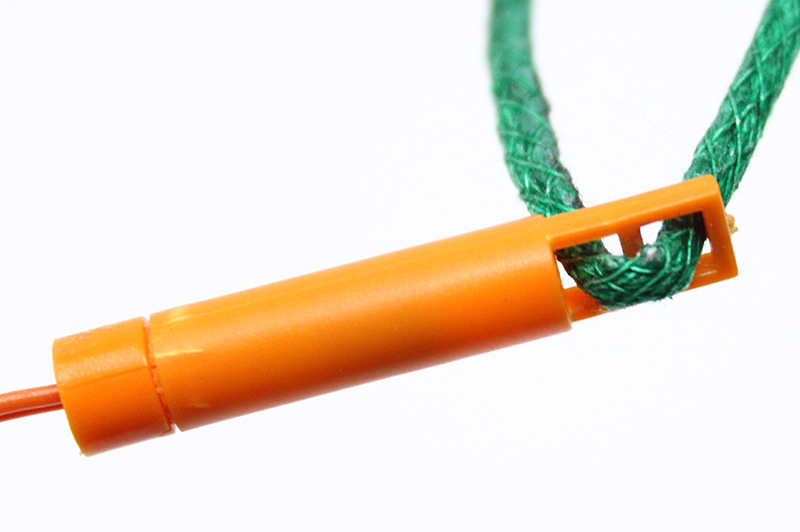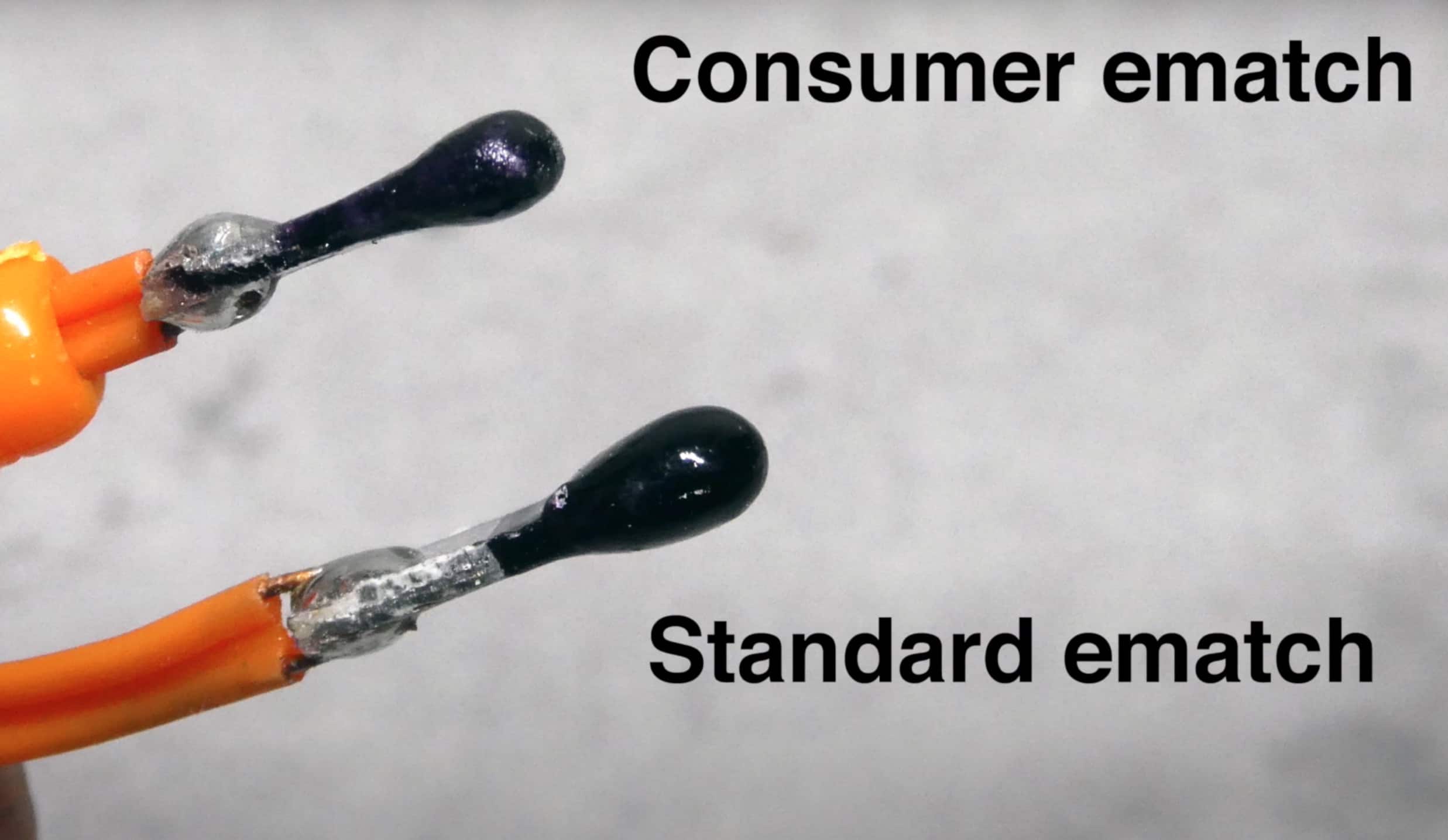Consumer Igniter Failures Part 2
Discussing evidence of why consumer ematches are prone to failure.
- Added on October 14, 2021
- Category: Firing Systems
- Last updated: February 10, 2023
Last year in my Consumer Igniter Failures video I showed how Talon (clip-on) igniters performed with a 100% success rate under test conditions, but consumer ematches suffered significant failures especially when used on the thinner fuse taken from consumer fireworks. I vowed to investigate these further and here I am!
Watch a video version of this article
If you prefer, you can watch my video on this part of my igniter investigation. Otherwise scroll down to continue reading.
What is a consumer ematch?
It’s important firstly to explain what a consumer ematch is. Unlike a standard ematch which is an explosive igniter shipped with a short protective plastic tube, a consumer ematch instead has a longer plastic surround with a gap at the end to thread visco in and out of, thus securing it in place. The idea is the flame from the igniter head sets the visco fuse alight.


What went wrong in the first test?
In my previous test (see the link in the intro, above) I used both types of consumer-orientated igniters: Talons which clip on to the fuse and use a heated wire to ignite it, and the consumer ematches described above. At that point it was assumed that consumer ematches were identical to standard ematches except for the shroud design shown in the photos above, so normal ematches were not tested as well.
My expectation was 100% success with consumer ematches as they contain an explosive head, whereas Talons should prove unreliable due in part from their delicate wire and in part based on reports from my readers; these are like Marmite with some of you having great success but many reporting failures.
But what actually happened was the reverse! All of the Talons fired OK but there were multiple failures with the consumer ematches. The failure rate increased dramatically when I used the thinner fuse taken from actual consumer fireworks. It was almost as if the thinner fuse left too much space at the end of the shroud for the flame to dissipate.
To rule out the fuse as being faulty I then tried to fire it with Talons – and it fired with no problems.
By the end of my testing, in desperation to try and reduce the failure rate with consumer ematches, I tried pushing the fuse right into the shroud – including with a significant amount of the fuse’s black powder exposed and even taping the whole thing up to contain the flame. There were still failures!
On thin fuse taken from actual live consumer fireworks (from a Standard “Box Of Tricks” selection box), 9 out of 16 consumer ematch igniters failed to light the visco.
When the visco was cut to expose black powder and taped in, failure rates dropped to 2 out of 24. Across the whole test, the overall failure rate was 10 out of 36.
It should also be noted that taping the visco into the shroud to reduce failures is not how the igniter is designed to be used – it is clearly supposed to be used by simply threading the visco in and out of the end slot.
The surprising power of standard ematches
Fast-forward now to this summer and I had started to use standard ematches in various tests whilst reviewing firing systems. When firing multiple ematches I was surprised at how loud they sounded, compared to consumer ematches, in fact they made me jump more than once. I wondered if they were more powerful igniters than consumer ematches.
I also used standard ematches in some miniature photography for my UKFR enamel badges. Based on the flame and effect from un-shrouded consumer ematches I was expecting a slow flame. What happened was more of a “pop” and quite a significant flare-up.
This lead me then to consider the possibility that the igniter head in consumer ematches is not as powerful as the igniter head in standard ematches. This could explain both my failures but also the strange case where many of my readers who use standard ematches to light visco have never encountered an issue with them.
My first port of call in testing this theory was to physically examine the igniter heads of each type of ematch. As you can see in the photo below, the standard ematch igniter head is bigger and more bulbous than the consumer ematch igniter head.

Next, I set up and let off alternating igniters and it was clear that standard ematches gave a more powerful effect than consumer ematches. You can see this in my video above.
And finally I did some tests using standard ematches to light visco and encountered no failures at all. I’ll go into more detail about that in a future article.
Conclusion
Based on my original testing and my latest comparisons against standard ematches, I conclude that consumer ematches are not as powerful and standard ones. In fact, the lack of firepower in my opinion contributed to significant failures to ignite thin visco when used “as designed”.
Less failures occurred when the fuse was stuffed down into the shroud, but it still wasn’t 100% and if you’re going to do that with the fuse why not just buy standard ematches with a more powerful flame and use those?
Personally I will not be using consumer ematches any further and cannot recommend them. If you have some and intend to use them, my advice is to cut the fuse to expose some of the black powder inside, push it right into the shroud and then tape it up to contain the flame.